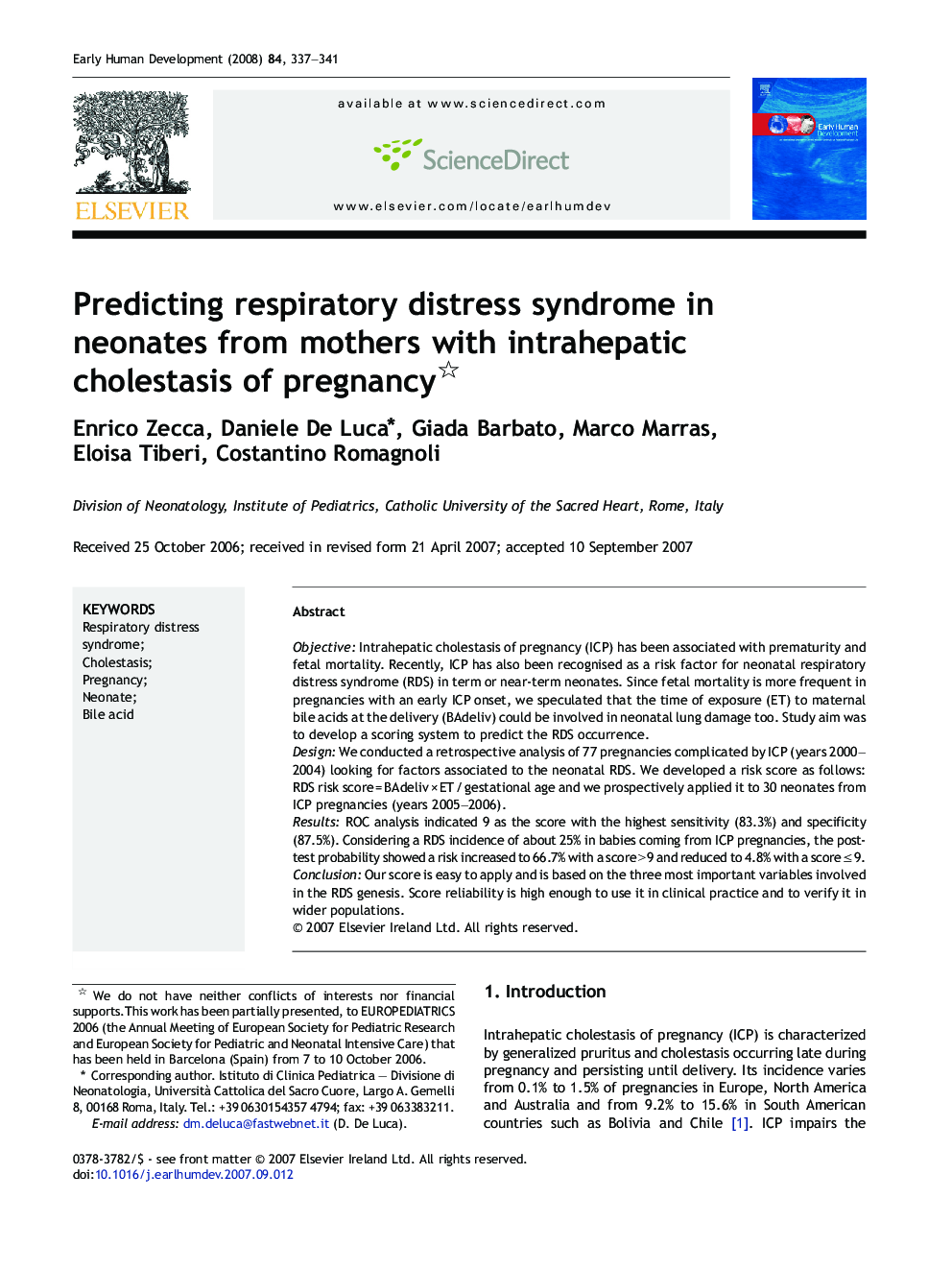| Article ID | Journal | Published Year | Pages | File Type |
|---|---|---|---|---|
| 3917622 | Early Human Development | 2008 | 5 Pages |
ObjectiveIntrahepatic cholestasis of pregnancy (ICP) has been associated with prematurity and fetal mortality. Recently, ICP has also been recognised as a risk factor for neonatal respiratory distress syndrome (RDS) in term or near-term neonates. Since fetal mortality is more frequent in pregnancies with an early ICP onset, we speculated that the time of exposure (ET) to maternal bile acids at the delivery (BAdeliv) could be involved in neonatal lung damage too. Study aim was to develop a scoring system to predict the RDS occurrence.DesignWe conducted a retrospective analysis of 77 pregnancies complicated by ICP (years 2000–2004) looking for factors associated to the neonatal RDS. We developed a risk score as follows: RDS risk score = BAdeliv × ET / gestational age and we prospectively applied it to 30 neonates from ICP pregnancies (years 2005–2006).ResultsROC analysis indicated 9 as the score with the highest sensitivity (83.3%) and specificity (87.5%). Considering a RDS incidence of about 25% in babies coming from ICP pregnancies, the post-test probability showed a risk increased to 66.7% with a score > 9 and reduced to 4.8% with a score ≤ 9.ConclusionOur score is easy to apply and is based on the three most important variables involved in the RDS genesis. Score reliability is high enough to use it in clinical practice and to verify it in wider populations.
